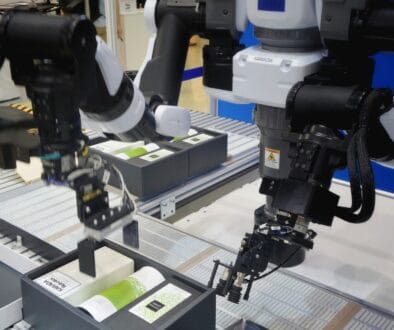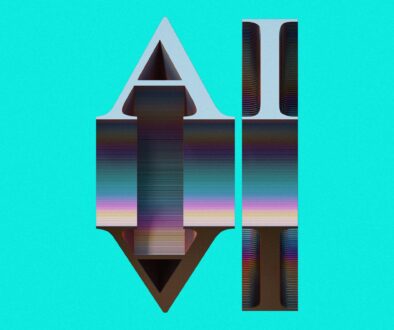Boost Your Productivity: A Guide to Using AI Effectively

Introduction to AI and Productivity
Artificial Intelligence (AI) has rapidly evolved from a theoretical concept to an indispensable element across various sectors, significantly influencing productivity. At its core, AI refers to the development of computer systems capable of performing tasks that typically require human intelligence. This encompasses a broad range of functionalities such as speech recognition, decision-making, and visual perception. As organizations increasingly adopt AI-driven solutions, they experience substantial improvements in their operational efficiency.
One of the fundamental aspects of AI’s impact on productivity is automation. By handling repetitive tasks, AI systems free up valuable time for human workers to focus on more complex and strategic activities. For instance, in industries such as manufacturing and logistics, AI-powered robots optimize production lines, leading to a reduction in error rates and operational delays. This has resulted in significant cost savings and an overall enhancement in productivity levels.
Furthermore, AI technologies can analyze vast amounts of data at incredible speeds, offering insights that are crucial for decision-making processes. Businesses can utilize AI to identify trends, forecast demands, and tailor services accordingly, ensuring that resources are allocated efficiently. Through predictive analytics and machine learning, AI allows companies to make informed decisions, thereby fostering an environment conducive to growth and efficiency.
AI’s applications extend beyond the corporate sphere, significantly shaping fields such as healthcare and education. In healthcare, AI assists in diagnosing diseases and personalizing treatment plans, ultimately improving patient outcomes. In education, AI-driven platforms provide personalized learning experiences, helping students achieve their academic goals more effectively.
As we continue to explore the integration of AI in various domains, it becomes evident that embracing this technology is not merely a trend but a necessary step toward enhanced productivity. Understanding the potential of AI not only assists organizations in streamlining their processes but also positions them favorably to thrive in an increasingly competitive landscape.
Understanding Your Productivity Needs
Before integrating artificial intelligence (AI) into your workflow, it is imperative to assess your specific productivity needs thoroughly. This assessment will serve as the foundation for identifying how AI can enhance your efficiency and effectiveness. To start, evaluate your current processes by documenting your daily tasks and responsibilities. Note the time spent on each activity and consider how well these tasks align with your overall objectives.
Next, identify pain points in your workflow. Are there repetitive tasks that consume significant time but do not contribute substantially to your goals? Are there areas where you frequently encounter obstacles or bottlenecks? Recognizing these challenges is essential, as they often indicate where AI solutions can be implemented to alleviate your workload. For instance, if manual data entry is a predominant task taking up hours each week, AI-driven automation tools could streamline this process, freeing up time for more strategic activities.
Establishing clear goals for improvement is another critical step in this evaluation. What do you hope to achieve by integrating AI into your work processes? Whether your aim is to reduce task completion times, enhance decision-making accuracy, or improve team collaboration, defining specific objectives will guide your search for suitable AI solutions. Consider using a self-assessment checklist to categorize your tasks and identify areas ripe for AI intervention. This checklist can include sections dedicated to task frequency, importance, and complexity, offering a straightforward way to prioritize activities that would benefit from automation or AI assistance.
By taking the time to understand your productivity needs and challenges, you set the stage for a successful integration of AI into your operations, ensuring that the technology serves as a valuable ally in achieving your goals.
Exploring AI Tools for Productivity
In the contemporary professional landscape, various AI-powered tools have emerged to significantly improve productivity across different domains. These tools span a wide range of functions, providing solutions for project management, time tracking, personal assistance, and more. By leveraging artificial intelligence, organizations and individuals can streamline workflows, enhance collaboration, and ultimately boost work output.
One of the leading categories of AI tools is project management software. Platforms such as Asana and Trello now incorporate AI-driven features that help identify project bottlenecks, predict task durations, and provide recommendations for resource allocation. These tools utilize machine learning algorithms to analyze historical data and suggest optimal pathways for project completion, allowing teams to focus more on their core activities while maintaining high organizational standards.
In addition to project management, personal assistant AI applications like Otter.ai and Todoist function to optimize daily tasks. These tools utilize natural language processing to transcribe meetings, schedule tasks, and remind users of deadlines. By ensuring that important information is captured and organized, users can concentrate on their responsibilities without the fear of forgetting critical tasks.
Moreover, AI-driven analytics tools such as Tableau and Power BI have revolutionized the way organizations interpret data. By automating data aggregation and visualization, these tools provide actionable insights that enable businesses to make informed decisions swiftly. This not only enhances operational efficiency but also cultivates a culture of data-driven decision-making within teams.
With the increasing availability of these AI tools, it is crucial for professionals to explore and select the most suitable applications that align with their specific productivity needs. The correct integration of such tools can lead to enhanced work performance and more organized workflows, thus directly affecting an individual’s overall productivity levels.
Integrating AI into Daily Workflows
In the contemporary work environment, incorporating artificial intelligence (AI) tools into daily workflows can significantly enhance efficiency and productivity. To begin with, organizations can set up automation workflows that streamline repetitive tasks. By identifying processes that are time-consuming yet necessary—such as data entry or appointment scheduling—teams can deploy AI-driven software to handle these activities, allowing human employees to focus on higher-value projects that require critical thinking and creativity.
AI can also play a pivotal role in data analysis. Businesses often grapple with large volumes of data that can be overwhelming when processed manually. Utilizing AI algorithms facilitates quicker insights into market trends, customer behavior, and operational performance. Tools like predictive analytics can help anticipate future outcomes based on historical data, leading to more informed decision-making. For instance, a retail company may employ AI to analyze purchasing patterns, thus optimizing inventory management and reducing waste.
Another critical aspect of integrating AI into daily workflows is enhancing communication. AI chatbots can assist both internal teams and customers by providing timely responses to inquiries. This kind of AI-driven engagement not only improves service quality but also enhances employee productivity by minimizing interruptions from routine questions. For example, a customer service department might implement chatbots to handle frequently asked questions, thereby allowing staff to dedicate more time to complex customer issues.
Real-life examples further illustrate the potential of AI integration. Companies such as IBM and Salesforce have successfully embedded AI within their products to improve user experience and operational efficiency. By leveraging these tools thoughtfully, organizations can achieve seamless integration of AI into their workflows, ensuring that they harness technology to its fullest potential while maintaining a focus on human ingenuity.
Leveraging AI for Time Management
Effective time management is an essential component of boosting overall productivity. With the rise of artificial intelligence (AI) technologies, individuals now have access to a variety of tools designed to enhance time allocation and task management. AI-driven solutions can significantly streamline daily schedules and facilitate the prioritization of important tasks, enabling users to focus on what truly matters.
One prominent application of AI in time management is through scheduling tools. These AI-powered applications can analyze your calendar and preferences to automatically schedule meetings, allocate time for tasks, and even suggest optimal periods for breaks. By utilizing such intelligent scheduling tools, individuals can save valuable time that would otherwise be spent juggling their calendars and manually setting appointments. This efficiency not only enhances productivity but also minimizes stress, as users no longer have to worry about double-booking or overlooking important events.
AI is also proficient in the art of reminders and notifications. Many AI tools can send prompts based on task deadlines and upcoming meetings. These timely alerts help individuals stay organized and accountable, reducing the likelihood of missed deadlines. Furthermore, AI platforms can adapt and learn from user interactions, meaning that reminders can be customized to fit personal work habits and preferences over time.
Prioritization techniques are another vital aspect where AI can offer support. Advanced algorithms can analyze both the urgency and importance of tasks, enabling users to make more informed decisions about how to allocate their time. For example, AI can categorize tasks based on their deadlines and significance, allowing individuals to focus on high-priority items without getting distracted by less critical responsibilities.
By integrating AI into daily time management practices, individuals not only optimize their schedules but also create a conducive environment for accomplishing important tasks efficiently. As technology continues to evolve, leveraging AI can lead to lasting improvements in productivity and work-life balance.
AI in Collaborative Environments
Collaboration plays a pivotal role in the productivity and efficiency of teams across various professional settings. The integration of artificial intelligence (AI) into collaborative environments has fundamentally transformed how teams communicate, cooperate, and deliver results. By leveraging AI applications, organizations can enhance teamwork and improve overall output.
One of the most significant contributions of AI to collaborative work is through smart document sharing. Traditional document sharing processes often involve cumbersome email exchanges and version control issues. AI-driven platforms, however, utilize natural language processing and machine learning algorithms to simplify these tasks. These intelligent systems automatically organize documents, track changes, and ensure that all team members are accessing the latest version of a shared file. This seamless experience minimizes misunderstandings and helps teams stay aligned on project progress.
Moreover, virtual brainstorming tools equipped with AI capabilities provide an innovative solution for fostering creativity and collaboration. These platforms encourage team members to contribute ideas in real time, aggregating suggestions based on specific criteria using AI analytics. Such tools can identify patterns and recommend relevant concepts that might help steer the conversation. By facilitating an inclusive space for idea generation, AI enhances the collaborative process and leads to richer discussions and more robust solutions.
AI-driven project management solutions also exemplify how technology can streamline collaboration. These tools analyze workloads, timelines, and individual team member contributions, providing insights that enable better allocation of resources and prioritization of tasks. Furthermore, these applications facilitate communication among team members by offering a centralized platform where updates, deadlines, and feedback are easily accessible. By worthily integrating AI into project management, teams can enhance their efficiency, promoting a more productive work environment.
Addressing Challenges and Limitations of AI
The integration of artificial intelligence (AI) into various sectors has undoubtedly transformed operations and productivity. However, it is essential to address the potential challenges and limitations that accompany this technological advancement. One of the foremost concerns is data privacy. With AI systems heavily relying on algorithms that analyze vast amounts of data, there can be unintended consequences regarding the security and confidentiality of sensitive information. Organizations must adopt stringent data governance frameworks to ensure compliance with privacy regulations, safeguarding user data while utilizing AI tools effectively.
Another significant challenge is the necessity for ongoing training and updating of AI systems. As industries evolve, the data on which AI systems are trained can grow outdated, leading to inefficiencies or inaccuracies in decision-making processes. Continuous learning and improvement are vital to maintaining the effectiveness of AI solutions, which can necessitate a dedicated investment in resources and human capital. This ongoing educational requirement can create strain on organizations, especially if they lack the expertise or capacity to manage these systems efficiently.
Furthermore, resistance to change among employees can hinder the implementation of AI solutions. Individuals may fear job displacement or be skeptical about the reliability and accuracy of AI technologies. To combat this resistance, it is crucial for organizations to foster an inclusive culture that emphasizes the role of technology as an augmentative tool. Training employees to work alongside AI can build a collaborative environment where human skills and machine efficiencies are maximized. By addressing these challenges proactively, organizations can navigate the complexities of AI integration successfully, ultimately enhancing productivity while minimizing potential risks.
The Future of AI in Productivity
As organizations continue to adapt to a rapidly changing technological landscape, the future of artificial intelligence (AI) in productivity appears promising and transformative. Emerging trends indicate that AI will play a critical role in enhancing workplace efficiency, facilitating smarter decision-making, and automating routine tasks, thereby allowing employees to focus on more strategic initiatives. The advent of more sophisticated machine learning algorithms is likely to enable AI systems to learn from data patterns more effectively, thus producing personalized insights that can further amplify productivity levels.
One of the most significant advancements in AI applications for productivity pertains to the integration of predictive analytics. By harnessing vast amounts of data, AI can forecast trends, monitor employee performance, and identify potential bottlenecks in workflows. Such insights allow organizations to proactively address issues before they escalate, optimizing the efficiency of operations. Additionally, AI-driven tools are expected to enhance collaboration by simplifying communication and providing real-time feedback, which is vital for team-oriented environments.
However, as we appreciate the potential of AI to optimize productivity, it is equally important to recognize the ethical implications associated with its usage. The priority of developing ethical AI frameworks cannot be overstated, as organizations must ensure that AI applications are transparent, fair, and devoid of bias. Stakeholders are increasingly advocating for responsible AI deployment that considers the impact on employees’ roles and promotes an inclusive workplace culture. Thus, balancing productivity gains with ethical considerations will remain a pivotal focus for businesses moving forward.
In conclusion, the intersection of AI and productivity holds remarkable potential for the future of work. By embracing emerging trends and committing to ethical practices, organizations can harness the power of AI to drive efficiency and innovation in the workplace.
Conclusion and Action Plan
As we have explored throughout this guide, utilizing artificial intelligence (AI) can significantly enhance productivity across various domains. By automating repetitive tasks, improving decision-making processes, and streamlining workflows, AI empowers individuals and organizations to focus on more strategic initiatives. Understanding the different types of AI tools available and how they can specifically address your unique challenges is pivotal in harnessing their potential to foster increased productivity.
To implement AI effectively in your daily routine, begin by assessing your current workflows to identify areas where AI can provide the most benefit. Prioritize tasks that consume a considerable amount of time but offer little value. Research suitable AI tools designed to address these tasks, such as chatbots for customer service, data analysis software, or project management systems that feature machine learning capabilities. Start small; integrating one or two AI solutions can serve as a practical entry point into adopting these technologies without overwhelming yourself or your team.
Additionally, consider investing time in learning more about AI through online courses, webinars, or literature focusing on the subject. Numerous resources are available, ranging from introductory courses on AI principles to detailed guides on implementing AI in specific industries. Engaging with online communities or forums can also help you connect with others who share similar goals and can offer insights into their experiences using AI for productivity enhancement.
In summary, the integration of AI into your productivity strategy is not merely a trend but a necessity in the modern world. By taking deliberate actions, tap into the immense benefits of AI, ensuring that you remain competitive and efficient in your endeavors. Embrace this technological evolution, and allow it to pave the way for new opportunities and innovations in your professional journey.





Robotics and Multimodal AI: Transforming Real-World Interaction in 2025
March 17, 2025 @ 3:30 am
[…] ALSO READ :Boost Your Productivity: A Guide to Using AI Effectively […]